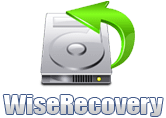RAID is an acronym for Redundant Array of Independent Disks. It is a method of combining several hard disk drives into one unit. This method offers fault tolerance (the ability of a system to continue to perform functions even when one or more hard disk drives have failed) and higher protection against data loss than a single hard drive. RAID is now used as an umbrella term for computer data storage schemes that can divide and replicate data among multiple physical drives: RAID is an example of storage virtualization and the array can be accessed by the operating system as one single drive.
RAID provides high performance to our computer users, especially server users but it also brings us with much trouble. However, when we encounter data loss due to system crash, virus attack or power failure, it will get serious because it causes greater loss if we recover data from raid at random. Therefore, we should get a professional raid recovery software for the safeness of our computers.
Different Levels of RAID
There are several different levels of RAID available. Each level offers various advantages in terms of data availability, cost and performance. Our best bet is to assess your needs in order to determine which level works best for you. Here we introduce some commonly-used RAID levels. RAID 0 provides data striping but no redundancy. This improves performance but does not deliver fault tolerance. If one disk fails then all data in the array is lost. RAID 1 provides twice the read transaction rate of single drives and the same write transaction rate as single disks. RAID 5 provides data striping at the byte level and also stripe error correction information. This results in excellent performance and good fault tolerance.
How to do raid recovery with WiseRecovery
1. Run WiseRecovery software, and click on Start scan.
2. Choose the drive to start scanning.
3. Now, the scanning process will commence. After scanning, list of file types will be displayed in the left pane.
4. Click each file type to view files in it. You will see thumbnails when you click on the file type.
5. You can either recover all or selected files by clicking the Recovery button.


 English
English Français
Français Español
Español Deutsch
Deutsch Italiano
Italiano 日本語
日本語 简体中文
简体中文 繁體中文
繁體中文